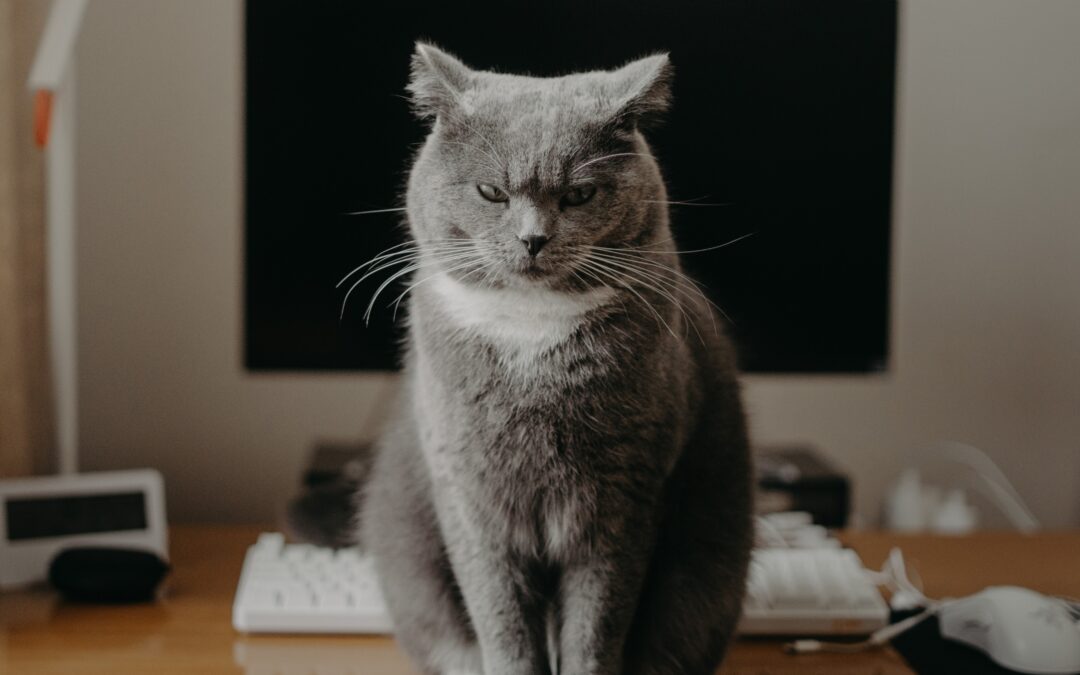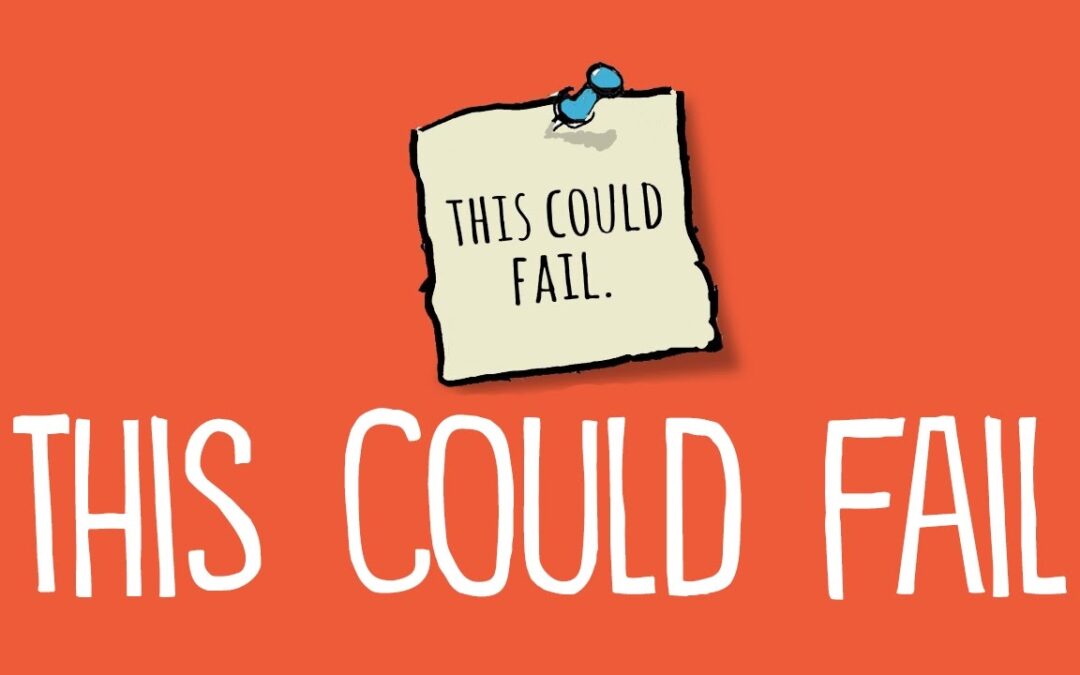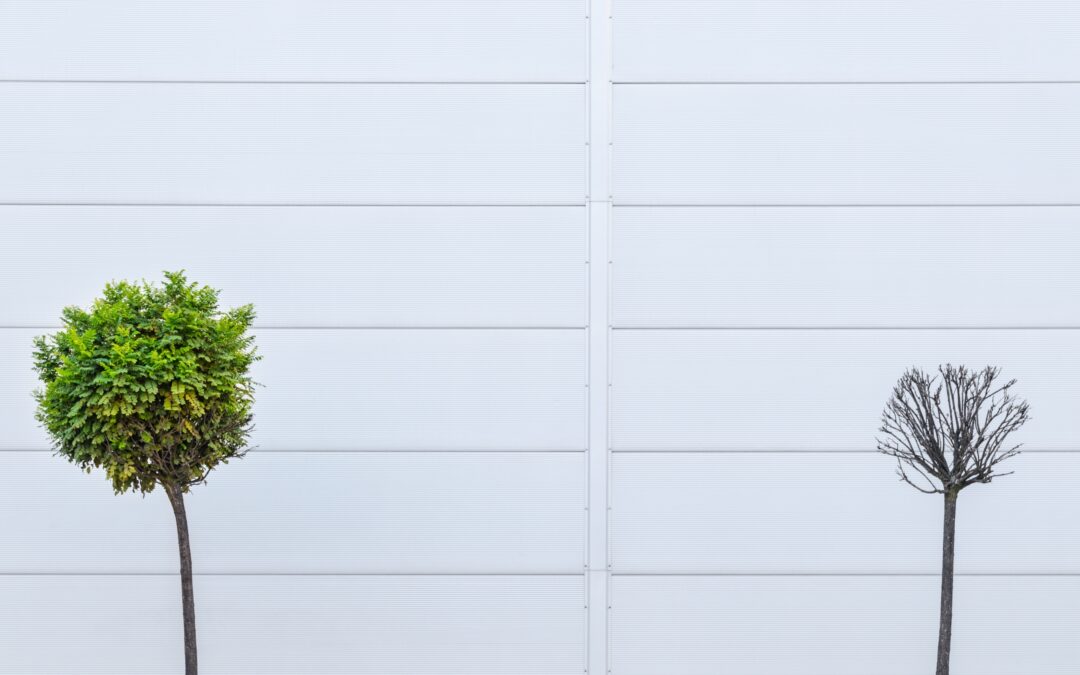
by Robyn Bolton | May 17, 2023 | Innovation, Leadership, Stories & Examples
A few weeks ago, a Google researcher leaked an internal document asserting that Google (and open AI) will lose the AI “arms race” to Open Source AI.
I’ll be honest: I didn’t understand much of the tech speak – LLM, LLaMA, RLHF, and LoRA are just letters to me. But I understood why the memo’s writer believed that Google was about to lose out on a promising new technology to a non-traditional competitor.
They’re the same reasons EVERY large established company loses to startups.
Congratulations, big, established industry incumbents, you’re finally innovating like Google!
(Please note the heavy dose of sarcasm intended).
Innovation at Google Today
The document’s author lists several reasons why “the gap is closing astonishingly quickly” in terms of Google’s edge in AI, including:
- “Retraining models from scratch is the hard path” – the tendency to want to re-use (re-train) old models because of all the time and effort spent building them, rather than start from scratch using newer and more flexible tools
- “Large models aren’t more capable in the long run if we can iterate faster on small models” – the tendency to want to test on a grand scale, believing the results are more reliable than small tests and drive rapid improvements.
- “Directly competing with open source is a losing proposition” – most people aren’t willing to pay for perfect when “good enough” is free.
- “We need them more than they need us” – When talent leaves, they take knowledge and experience with them. Sometimes the competitors you don’t see coming.
- “Individuals are not constrained by licenses to the same degree as corporations” – Different customers operate by different rules, and you need to adjust and reflect that.
- “Being your own customer means you understand the use case” – There’s a huge difference between designing a solution because it’s your job and designing it because you are in pain and need a solution.
What it sounds like at other companies
Even the statements above are a bit tech industry-centric, so let me translate them into industry-agnostic phrases, all of which have been said in actual client engagements.
- Just use what we have. We already paid to make it.
- Lots of little experiments will take too long, and the dataset is too small to be trusted. Just test everything all at once in a test market, like Canada or Belgium.
- We make the best [product]. If customers aren’t willing to pay for it because they don’t understand how good it is, they’re idiots.
- It’s a three-person startup. Why are we wasting time talking about them?
- Aren’t we supposed to move fast and test cheaply? Just throw it in Google Translate, and we’ll be done.
- Urban Millennials are entitled and want a reward. They’ll love this! (60-year-old Midwesterner)
How You (and Google) can get back to the Innovative Old Days
The remedy isn’t rocket (or computer) science. You’ve probably heard (and even advocated for) some of the practices that help you avoid the above mistakes:
- Call out the “sunk cost fallacy,” clarify priorities, and be transparent about trade-offs. Even if minimizing costs is the highest priority, is it worth it at the expense of good or even accurate data?
- Define what you need to learn before you decide how to learn it. Apply the scientific method to the business by stating your hypothesis and determining multiple ways to prove or disprove it. Once that’s done, ask decision-makers what they need to see to agree with the test’s result (the burden of proof you need to meet).
- Talk. To. Your. Customers. Don’t run a survey. Don’t hire a research firm. Stand up from your desk, walk out of your office, go to your customers, and ask them open-ended questions (Why, how, when, what).
- Constantly scan the horizon and seek out the small players. Sure, most of them won’t be anything to worry about, but some will be on to something. Pay attention to them.
- See #3
- See #3
Big companies don’t struggle with innovation because the leaders aren’t innovative (Google’s founders are still at the helm), the employees aren’t smart (Google’s engineers are amongst the smartest in the world), or the industry is stagnating (the Tech industry has been accused of a lot, but never that).
Big companies struggle to innovate because operating requires incredible time, money, and energy. Adding innovation, something utterly different, to the mix feels impossible. But employees and execs know it’s essential. So they try to make innovation easier by using the tools, processes, and practices they already have.
It makes sense.
Until you wake up and realize you’re Google.

by Robyn Bolton | May 11, 2023 | Leadership, Stories & Examples, Tips, Tricks, & Tools
“We have successfully retained the opportunity for improvement.”
When the CEO said this to kick off a meeting, I knew we were in for an adventure. He smirked at the corporate double-speak, paused for the laughter, then outlined all the headwinds facing the business. But the only thing I remember from that meeting was his opening line.
I think about it all the time. Because it seems to apply all the time.
And despite the turmoil brought on by a pandemic, a war, and an economic slowdown, we have successfully retained the opportunity to improve how we deal with uncertainty.
That isn’t to say we haven’t improved over the past three years. In fact, at an event sponsored by NextUp, four executives from P&G, CVS, Hannaford, and Intel shared what they learned and how they changed while navigating uncertainty.
Listen more
Dave DeJohn, Director of Operations for Hannaford, talked about the importance of listening deeply and constantly to employees, especially those on the front lines. Consistent with its core values of family, community, quality, and value, store associates are trained that the customer is always right. However, as incidents of verbal abuse increased during the lockdowns, employee satisfaction and mental health declined. By closely listening and observing what was happening in stores, Hannaford’s leadership modified their customer service approach to “the customer is always right, within reason” and empowered employees to stand up for themselves and each other when faced with hostile shoppers.
Stronger relationships lead to stronger results
Every executive shared stories from the early days of working from home – technical glitches, kids invading calls, and even cats positioning themselves awkwardly in front of cameras when the human stepped away. Far from being signals of a lack of commitment or professionalism, these moments transformed roles and titles into human beings, juggling all the things humans must juggle. Once people started seeing others as fellow humans versus bosses, peers, or subordinates, they connected on a human level and formed genuine and trusting relationships. Those relationships led to better collaboration, more effective troubleshooting, and better business results.
Concise concrete communication is critical
In periods of uncertainty, information is power. But it’s also constantly changing. For that reason, constant communication is a must. But in a large organization, communication often comes from multiple departments – employee relations, HR, health and safety, operations, and marketing, to name a few – and that can be overwhelming. For this reason, DeJohn learned that keeping every message concise (ideally the length of a tweet but no more than a short paragraph) and concrete (specific, tangible, tactical rather than high-level platitudes) proved critical to keeping people aligned and moving forward.
Just because you can, doesn’t mean you need to
Keris Clark, VP of Sales at P&G, spoke about the drastic shift in her work/life balance when she could no longer travel to see customers or attend meetings. Instead of taking the first flight from Boston to Seattle for a meeting and then a red-eye back home, she suddenly had time to work out, cook, and spend time with family. As travel became safer and invitations to far-away meetings came in, she thought more critically about whether or not to book the tickets. Like most of us, she still travels for some things, but it’s no longer the default option now that more people are used to video calls and other ways of working.
We can do things differently and still deliver
COVID’s effect on the supply chain is well documented, and Tiffiny Fisher, Chief of Staff and Technical Assistant for Intel’s America region, gave us a view into Intel’s situation in the earliest days of the pandemic. With fabrication, assembly, and testing sites throughout Asia, Intel had to work quickly to figure out how to continue operating while staying with government lockdown guidelines. Ultimately, hundreds of employees volunteered to leave their families and live in hotels near Intel facilities so that they could continue operating. It was a huge sacrifice by employees and probably not one that anyone would want to make again. Still, it proved that Intel, with the support of its employees, could quickly make massive changes to its operations while continuing to deliver results.
Uncertainty can be deeply uncomfortable, even frightening, even though we face it every day. Building the skills to navigate it and learning lessons about what works and doesn’t can make it easier. But if you still struggle, don’t worry. It just means you’ve successfully retained the opportunity for improvement.

by Robyn Bolton | Apr 27, 2023 | Innovation, Leadership
“Rapid Unscheduled Disassembly”
It’s a meme and my new favorite euphemism for getting dumped/fired (as in, “There was a rapid unscheduled disassembly of our relationship.” Thank you, social media, for this gem)
It’s also spurred dozens of conversations with corporate leaders and innovation teams about the importance of defining success, the purpose of experiments, and the necessity of risk.
Define Success so You Can Identify Failure
The dictionary defines “fail (verb)” as “be unsuccessful in achieving one’s goal.”
But, as I wrote last week, using your definition of success to classify something as a failure assumes you defined success correctly.
Space X didn’t define success as carrying “two astronauts from lunar orbit to the surface of the moon,” Starship’s ultimate goal.
It defined success in 3 ways:
- Big picture (but a bit general) – Validating “whether the design of the rocket system is sound.”
- Ideal outcome – “Reach an altitude of 150 miles before splashing down in the Pacific Ocean near Hawaii 90 minutes [after take-off].”
- Base Case – Fly far enough from the launchpad and long enough to generate “data for engineers to understand how the vehicle performed.”
By defining multiple and internally consistent types of success, SpaceX inspired hope for the best and set realistic expectations. And, if the rocket exploded on the launchpad? That would be a failure.
Know What You Need to Learn so You Know What You Need to Do
This was not the first experiment SpaceX ran to determine “whether the design of the rocket system was sound.” But this probably was the only experiment they could run to get the data they needed at this point in the process.
You can learn a lot from lab tests, paper prototypes, and small-scale experiments. But you can’t learn everything. Sometimes, you need to test your idea in the wild.
And this scares the heck out of executives.
As the NYT pointed out, “Big NASA programs like the Space Launch System…are generally not afforded the same luxury of explode-as-you-learn. There tends to be much more testing and analysis on the ground — which slows development and increases costs — to avoid embarrassing public failures.”
Avoiding public failure is good. Not learning because you’re afraid of public failure is not.
So be clear about what you need to learn, all the ways you could learn it, and the trade-offs of private, small-scale experiments vs. large-scale public ones. Then make your choice and move forward.
Have Courage. Take a Risk
“Every great achievement throughout history has demanded some level of calculated risk, because with great risk comes great reward,” Bill Nelson, NASA Administrator.
“Great risk” is scary. Companies do not want to take great risks (see embarrassing public failure).
“Calculated risk” is smart. It’s necessary. It’s also a bit scary.
You take a risk to gain something – knowledge, money, recognition. But you also create the opportunity to lose something. And since the psychological pain of losing is twice as powerful as the pleasure of gaining, we tend to avoid risk.
But to make progress, you must take a risk. To take a risk, you need courage.
And courage is a skill you can learn and build. For many of us, it starts with remembering that courage is not the absence of fear. It is the choice to take action despite fear.
When faced with a risk, face it. Acknowledge it and how you feel. Assess it by determining the best, worst, and most likely scenarios. Ask for input and see it from other people’s perspectives. Then make your choice and move forward.
How to know when you’ve successfully failed
Two quotes perfectly sum up what failure en route to success is:
“It may look that way to some people, but it’s not a failure. It’s a learning experience.”- Daniel Dumbacher, executive director of the American Institute of Aeronautics and Astronautics and a former high-level NASA official.
“Would it have been awesome if it didn’t explode? Yeah. But it was still awesome.” – Launch viewer Lauren Posey, 34.

by Robyn Bolton | Apr 19, 2023 | Innovation, Leadership
A couple of weeks ago, I wrote about my hatred of failure while acknowledging that there are things I hate more (inertia, blind allegiance to the status quo, unwillingness to try) that motivate me to risk it.
In response, I received this email from my friend and former colleague Daymara, now the Founder & CEO of Rockin’ Baker in Fayetteville, AR (shared here with her permission)
I’m the opposite. I love failing! That’s when I learn the most, that I question what and how I could better, question more and more. It triggers my brain to look back, re-evaluate, assess and spring forward. I wouldn’t be here today if I had not risked. I don’t think anyone starts anything thinking when they’d fail. But some of us aren’t afraid or hate it. I wouldn’t be here if I hate failing, wouldn’t have left my country looking for a safer place, wouldn’t have launched RBI because I didn’t have any entrepreneurial experience not even in the hospitality industry, wouldn’t have switched to focus on neurodiversity and so much more.
.
Because I came to the US, I got to meet you. Yes, I failed at seeing the signs & lost over 60% of my savings just 2 weeks before leaving Venezuela. I could’ve decided to stay because maybe it was going to be harder and the risk of failing in a country I didn’t know higher. I had a plan. If it didn’t work, come back home & start all over again.
.
I started RBI understanding that I could fail. I told myself, if I did, at least I would have an answer. Yes, I’m failing terribly at making this social enterprise work. Yet, I’ve gained so much knowledge about humanity, our differences, the unfairness that neurodivergents have to live daily, running a social enterprise and so much more. If I had hated failing, I wouldn’t be sharing my experience with other entrepreneurs so they don’t make the same mistakes I made. I wouldn’t be advocating for more equitable places for all, including women.
.
Failing feeds me to do better, to ask more questions, to explore more, to lead me to become better. I don’t love failing, I welcome it.
.
My first thought was, “Wow, this is so healthy! I wish more people felt and acted this way!”
My second thought was, “I wouldn’t apply the word ‘fail’ to any of these situations. You’re trying, learning, changing, and trying again.:
Just because you don’t get the expected outcome the first time doesn’t mean you failed.
Or does it?
What the Dictionary Says
According to Oxford Languages, “fail” (verb) means
- Be unsuccessful in achieving one’s goal, “he failed in his attempt to secure election.”
- Neglect to do something, “the firm failed to give adequate risk warnings.”
- Break down; cease to work well, “a truck whose brakes had failed.”
True but contextual:
- If success is defined as launching a new product, but customer feedback proves there’s no demand or willingness to pay, is shutting it down a failure?
- If you neglect something that isn’t important or doesn’t have significant ramifications, like not eating breakfast, did you fail or simply forget, run out of time, or make a mistake?
- If something works but not well, like an expense reporting system, is it a failure or just burdensome, a pain, or a necessary evil?
Also, incomplete.
What People Say
“Fail” has so many definitions and meanings in Daymara’s telling of her story. In addition to some of the dictionary’s definitions, she also uses “Fail” to mean:
- Take smart risks, “I could’ve decided to stay because maybe it was going to be harder and the risk of failing in a country I didn’t know higher. I had a plan. If it didn’t work, come back home & start all over again.”
- Get new information to facilitate learning,
- “I’m the opposite. I love failing! That’s when I learn the most, that I question what and how I could better, question more and more. It triggers my brain to look back, re-evaluate, assess and spring forward.”
- I started RBI understanding that I could fail. I told myself, if I did, at least I would have an answer.
- Adapt and change based on learning, “wouldn’t have switched to focus on neurodiversity”
- Grow, improve, evolve, “Failing feeds me to do better, to ask more questions, to explore more, to lead me to become better. I don’t love failing, I welcome it.”
What Do You Say?
Like “Innovation,” “Failure” is a word we all use A LOT that no longer has a common definition. In the dictionary, failure is bad and to be avoided. To Daymara and scores of entrepreneurs and innovators, failure is wonderful and welcome.
Progress, either towards or away from failure, requires us to define “Failure” for ourselves and our work and agree on a definition with our teammates.
So, tell me:
- What is failure to you?
- To your team?
- To your boss?

by Robyn Bolton | Apr 11, 2023 | Innovation, Leadership
To Cede, or to Seed, that is the question:
Whether ‘tis nobler in the mind to suffer
The slings and arrows of a down quarter or year,
Or to take arms against the Tyranny of Now
And by opposing overcome it.
To Cede – to withdraw,
Spend no more; and by stopping to say we end
The innovation and the thousand natural insights
That pave the way: ‘tis a necessity
Stoically to be endured
To Seed, to spend;
To spend perchance to grow – ay there’s the rub:
For in that spending on innovation what revenue may come,
When we have emerged from this uncertainty,
Must give us hope – there’s the advantage
That makes success of such a business
- Hamlet, if he were a senior executive making budget decisions during periods of uncertainty (and with my deepest apologies to Shakespeare)
The Question
To cede or seed is the question facing so many executives right now.
The same question faced executives in 2001, 2008, and 2020.
And an answer is required.
But what’s the right answer?
As a friend likes to say, “It’s contextual.”
To Cede
Cede is the most common answer for two main reasons: (1) executives feel they don’t have a choice because super-senior executives mandated an x% budget, or (2) executives need to boost results by allocating resources to things with “guaranteed” ROI.
Whatever the reason, innovation is a luxury the business can no longer afford, and the core business is a necessity to be supported at all costs. As a result, rather than scaling back a little in a lot of places, managers believe it is safer and easier to eliminate innovation entirely and maintain, or even increase, resources for operations.
Sometimes, this is also the right answer.
If the business is hemorrhaging cash, its value is plummeting, and people are questioning whether or not it can stay in business, then Cede is the right answer. There’s no sense in investing for success in one, three, or five years if there’s little chance of seeing the next day, week, or month.
But odds are, you’re not in that situation.
To Seed
The Dot-com bubble. The Great Recession. COVID-19 recession.
The 21st century has allowed us to study the impact of different decisions during and after economic crises.
And when it comes to innovation, evidence shows that companies that continue to invest in innovation during times of economic uncertainty outperformed the market by 10% during the crisis and by up to 30% in the five years immediately following the crisis.
But not all companies.
A study of 4,700 companies during three global recessions (1980 – 1982, 1990 – 1991, and 2000 – 2002) found that “Businesses that boldly invest more than their rivals during a recession… enjoy only a 26% chance of becoming leaders after a downturn.” However,
“Companies that master the delicate balance between cutting costs to survive today and investing to grow tomorrow do well after a recession. Within this group, a subset that deploys a specific combination of defensive and offensive moves has the highest probability—37%—of breaking away from the pack. These companies reduce costs selectively by focusing more on operational efficiency than their rivals do, even as they invest relatively comprehensively in the future by spending on marketing, R&D, and new assets. Their multipronged strategy…is the best antidote to a recession.”
The takeaway – Seed, don’t splurge.
The Answer (sort of)
It’s easy, and incredibly biased, of me to assert that there is one and only one right answer. That the executive who cuts innovation spending (along with travel budgets and probably a few other things) is woefully short-sighted and dooming his business to a never-ending cycle of cutting back, losing ground, and racing to catch up, only to cut again when the next downturn hits.
It’s also very unfair because I’d be using history and theory to judge an executive grappling with the reality of organizational mandates, limited resources, and very real responsibilities.
The right answer is the one you can live with.
Ceding makes sense in the short term, but it’s a liability in the medium and long term.
Seeding pays off in 2-3 years, but you’ll endure skepticism and risk your bonus or job while waiting.
Research says Seeding is the right answer.
Reality often dictates Ceding.
The choice is yours.
Just remember that, like Hamlet, you live (or die) with the results.

by Robyn Bolton | Mar 14, 2023 | Innovation, Leadership
Last week, as news of Silicon Valley Bank’s losses and eventual collapse, took over the news cycle, attention understandably turned to the devastating impact on the startup ecosystem.
Prospects brightened a bit on Monday with news that the federal government would make all depositors whole. Startups, VCs, and others in the ecosystem would be able to continue operations and make payroll, and SVB’s collapse would be just another cautionary tale.
But the impact of SVB’s collapse isn’t confined to the startup ecosystem or the banking industry.
Its impact (should have) struck fear and excitement into the hearts of every executive tasked with growing their business.
Your Portfolio’s Risk Profile Just Changed
The early 2000s were the heyday of innovation teams and skunkworks, but as these internal efforts struggled to produce significant results, companies started looking beyond their walls for innovation. Thus began the era of Corporate Venture Capital (CVC).
Innovation, companies realized, didn’t need to be incubated. It could be purchased.
Often at a lower price than the cost of an in-house team.
And it felt less risky. After all, other companies were doing it and it was a hot topic in the business press. Plus, making investments felt much more familiar and comfortable than running small-scale experiments and questioning the status quo.
Between 2010 and 2020, the number of corporate investors increased more than 6x to over 4,000, investment ballooned to nearly $170B in 2021 (up 142% from 2020), and 1,317 CVC-backed deals were closed in Q1 of 2020.
But, with SVB’s collapse, the perceived risk of startup investing suddenly changed.
Now startups feel riskier. Venture Capital firms are pulling back, and traditional banks are prohibited from stepping forward to provide the venture debt many startups rely on. While some see this as an opportunity for CVC to step up, that optimism ignores the fact that companies are, by nature and necessity, risk averse and more likely to follow the herd than lead it.
Why This is Bad News
As CVC, Open Innovation, and joint ventures became the preferred path to innovation and growth, internal innovation shifted to events – hackathons, shark tanks, and Silicon Valley field trips.
Employees were given the “freedom” to innovate within a set time and maybe even some training on tools like Design Thinking and Lean Startup. But behind closed doors, executives spoke of these events as employee retention efforts, not serious efforts to grow the business or advance critical strategies.
Employees eventually saw these events for what they were – innovation theater, activities designed to appease them and create feel-good stories for investors. In response, employees either left for places where innovation (or at least the curiosity and questions required) was welcomed, or they stayed, wiser and more cynical about management’s true intentions.
Then came the pandemic and a recession. Companies retreated further into themselves, focused more on core operations, and cut anything that wouldn’t generate financial results in 12 months or less.
Innovation muscles atrophied.
Just at the moment they need to be flexed most.
Why This is Good News
As the risk of investment in external innovation increases, companies will start looking for other ways to innovate and grow. Ways that feel less risky and give them more control.
They’ll rediscover Internal Innovation.
This is the silver lining of the dark SVB cloud – renewed investment in innovation, not as an event or activity to appease employees, but as a strategic tool critical to delivering strategic priorities and accelerating growth.
And, because this is our 2nd time around, we know it’s not about internal innovation teams OR external partners/investments. It’s about internal innovation teams AND external partners/investments.
Both are needed, and both can be successful if they:
- Are critical enablers of strategic priorities
- Pursue realistic goals (stretch, don’t splatter!)
- Receive the people and resources required to deliver against those goals
- Are empowered to choose progress over process
- Are supported by senior leaders with words AND actions
What To Do Now
When it comes to corporate innovation teams, many companies are starting from nothing. Some companies have files and playbooks they can dust off. A few have 1 or 2 people already working.
Whatever your starting point is, start now.
Just do me one favor. When you start pulling the team together, remember LL Cool J, “Don’t call it a comeback, I been here for years.”





